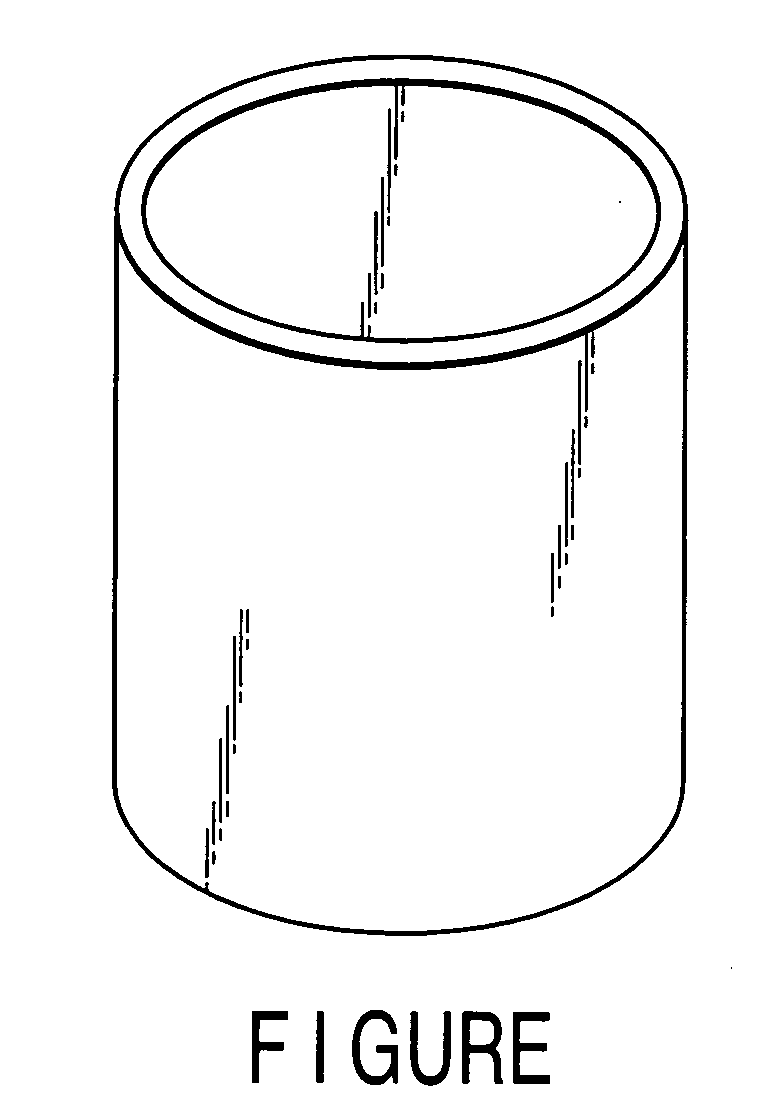Analytical vessel and trace element analysis method
a trace element and analytical vessel technology, applied in the direction of analytical using chemical indicators, laboratory glassware, instruments, etc., can solve the problems of large quantity of acid, gaseous substances are liable to be left, and the analysis performance of trace elements is hampered
- Summary
- Abstract
- Description
- Claims
- Application Information
AI Technical Summary
Benefits of technology
Problems solved by technology
Method used
Image
Examples
example 1
[0064] The residue, in the analytical vessel, of the elements to be analyzed, i.e. Al, Zr, Zn, Cu, Fe, Cr and Mg, was assessed as follows.
[0065] (Experiment 1)
[0066] High-purity Al, Zr, Zn, Cu, Fe, Cr and Mg each 1 g in quantity were respectively placed in a glassy carbon vessel (Vessel (A): 100 mL in capacity) and then, 20 mL of aqua regia was introduced into the vessel. The resultant solution was heated for 2 hours at a temperature of 100° C. and washed with pure water. The vessel (A) was immersed in 0.1 mol / L solution of nitric acid for 4 hours, after which the quantity of elements in the nitric acid was quantified by means of ICP-MS method and the quantities of residual elements in the vessel (A) were respectively measured (Experiment 1-1).
[0067] Then, the same procedure as executed in Experiment 1-1 was repeated twice to assess the residual elements in the vessel (A) in the same manner as in Experiment 1-1 (Experiments 1-2 and 1-3). The results thus obtained are shown in the...
example 2
[0075] The residue, in the analytical vessel, of the elements to be analyzed, i.e., K and Na, was assessed as follows.
[0076] (Experiment 2)
[0077] Potassium hydroxide and sodium hydroxide each 1 g in quantity were respectively placed in a glassy carbon vessel (Vessel (A): 100 mL in capacity) and then, 20 mL of pure water was introduced into the vessel. The resultant solution was heated for 2 hours at a temperature of 100° C. and washed with pure water. The vessel (A) was immersed in pure water for 4 hours, after which the quantity of K and Na in the pure water was quantified by means of atomic absorption spectrophotometry (hereinafter referred to as AAS) and the quantities of elements eluted from the vessel (A) were respectively measured (Experiment 2-1).
[0078] Then, the same procedure as executed in Experiment 2-1 was repeated twice to assess the residual elements in the vessel (A) in the same manner as in Experiment 2-1 (Experiments 2-2 and 2-3). The results thus obtained are sh...
example 3
[0086] The residue, in the analytical vessel, of chloride ions, nitrate ions, bromide ions, sulfate ions and fluoride ions was assessed as follows.
[0087] (Experiment 3)
[0088] 20 mL of a mixed solution containing chloride ion, nitrate ion, bromide ion, sulfate ion and fluoride ion each at a concentration of 50 g / L was placed in a glassy carbon vessel (Vessel [A]: 100 mL in capacity). Then, the vessel (A) was placed in a stainless steel outer casing and, after the outer casing was capped, the mixed solution was heated for 4 hours in a thermostatic oven heated to a temperature of 180° C.
[0089] After being cooled, the vessel (A) was immersed in pure water for 4 hours, after which the quantity of chloride ions, nitrate ions, bromide ions, sulfate ions and fluoride ions eluted from the vessel (A) was quantified by means of ion chromatography and the quantities of ions remained in the vessel (A) were respectively measured (Experiment 3-1).
[0090] Then, the same procedure as executed in ...
PUM
| Property | Measurement | Unit |
|---|---|---|
| temperature | aaaaa | aaaaa |
| particle diameter | aaaaa | aaaaa |
| temperature | aaaaa | aaaaa |
Abstract
Description
Claims
Application Information
 Login to View More
Login to View More - R&D
- Intellectual Property
- Life Sciences
- Materials
- Tech Scout
- Unparalleled Data Quality
- Higher Quality Content
- 60% Fewer Hallucinations
Browse by: Latest US Patents, China's latest patents, Technical Efficacy Thesaurus, Application Domain, Technology Topic, Popular Technical Reports.
© 2025 PatSnap. All rights reserved.Legal|Privacy policy|Modern Slavery Act Transparency Statement|Sitemap|About US| Contact US: help@patsnap.com

